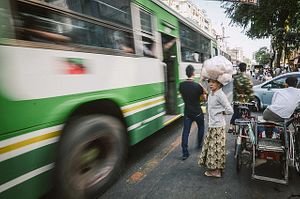Myanmar’s insurance market currently remains closed to foreign insurers, but this is soon set to change. Like banking before it, it is predicted that the Myanmar’s insurance market will be liberalized sometime this year. This presents enormous opportunities but also enormous challenges.
Currently, there are 24 foreign insurers with representative offices in Myanmar, which in turn means there will be a scramble when licenses are granted for a predicted $2 billion in premiums by 2030.
Myanmar is Southeast Asia’s largest mainland country. With 55 million people, close to eight percent of Asia’s population, Myanmar will be a key insurance market. Furthermore, over the half the population is under 30, making working age insurance products the most relevant. There is a big “education gap” that will be part of the communication challenge of educating the Myanmar public about what insurance is and how it can benefit them and protect them – from livelihoods to lives. Public information campaigns and public relations for the insurance sector are likely to focus heavily on building up awareness, understanding, and adoption of insurance products to bridge the large protection gap that remains.
When liberalization does take place, it is likely to be gradual. Current government sources are indicating that joint ventures with local insurers are most likely. This will mean local tie-ups with international firms, bringing knowledge transfers and new products to the market. However, it is still possible that 100 percent ownership licenses will be granted, giving insurers greater freedom.
For those waiting in the wings for the market to open up, there is huge optimism. Big names such as Prudential, MetLife and AIA are all among the 24 foreign insurers with representative offices waiting for licenses to be granted.
For Tom Renny, Chief Representative at AIA in Myanmar, the long-term potential of Myanmar for the insurance sector is huge.
“We see a lot of opportunities and are waiting to see what unfolds. However, we need to be conscious that the needs of Myanmar’s people are different to other countries. We must get it right from the start – from products to approach – if not, then this will put the industry back greatly. Myanmar people are distrusting after years of miss-selling and other financial schemes which have failed to deliver; we, therefore, need to work on building trust from the get-go.”
Progress is taking place in Myanmar’s insurance sector. In August, the Directorate of Investment and Company Administration (DICA) approved the establishment of Myanmar’s Association of Insurers giving a voice to the industry and Myanmar’s twenty-four representative offices. Beyond this, three Japanese insurers were granted Special Economic Zone (SEZ) licenses, although these licenses are only valid for a specific area and not the whole country.
The issue now it seems is timing. “Over sometime this year” has remained the official line for when licenses will be granted. However it is unclear, and information has not been cascaded down on when these licenses will be granted and the regulatory landscape that will accompany them. One of the main issues the industry has had is a lack of information. With the establishment of the official Association of Insurers, it is hoped that the industry will get better access to information and be able to help shape the regulatory debate with the government.
Regarding needs, Myanmar seems destined for basic insurance products to start with, as the industry grows and builds trust. More relatable products such as health insurance, savings plans, and worker protection are all among the products which are likely to be most in demand, as well as other short-term products.
For Myanmar’s insurance sector, it is now a case of watching and waiting for the gates to open. With twenty-four foreign firms lining up, the appetite is certainly there for when liberalization of the market finally does take place with the new products ready to serve a new insurance market in Asia’s last frontier.
Edward Parker is a contributor to The Diplomat, based in Southeast Asia.
































